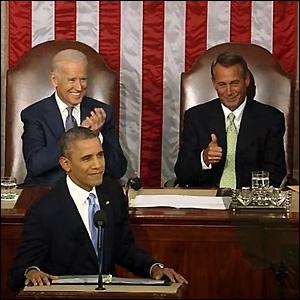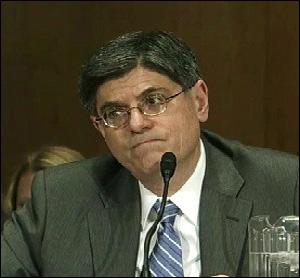By Pam Martens: January 29, 2014
There’s only three ways to think about President Obama’s new plan for offering workers retirement accounts as he disclosed in his State of the Union speech last night.
(1) President Obama and Treasury Secretary Jack Lew have decided to get into the financial services business as a front for Wall Street;
(2) Wall Street has conned the President into bypassing Congress and launch its decades-long push to establish private accounts in the hope that these could eventually replace Social Security;
(3) The reason we know so little about the details of this plan is that they’re not pretty.
The new account is to be called MyRA and would be structured as a Roth IRA where contributions go in after-tax but earnings compound untaxed over time. But Roth IRAs already exist and can be opened at any number of banks and discount brokers (or Wall Street firms where fees are much higher). Charles Schwab, for example, has no fees to open or maintain the account with as little as a $1,000 deposit or $100 automatic monthly deposits. Fees to make individual trades do apply but are quite reasonable. For example, one can buy 100 shares of a blue chip stock on line for a set fee of $8.95 at Schwab. Those shares can be put on dividend reinvest in the Schwab account, where quarterly dividend payments from the stock buy additional shares automatically in the account, without further cost.
Firms like Schwab also allow small IRA investors to diversify their holdings. If the small investor wants no risk, there are FDIC-insured CDs and U.S. Treasury notes. As long as these instruments are held to maturity, the principal is backed by the U.S. government.
Workers do not presently need an employer-sponsored plan to contribute to a traditional IRA or a Roth IRA. They just need two feet and the ability to walk into any number of existing community banks, credit unions or brokers who offer the plans.
So exactly what does this new MyRA do for workers that they can’t get elsewhere? According to the limited details out this morning from the White House, the account would work like this:
Employers would have to sign up to offer the plan through payroll deductions. Initial contributions to the account could be as low as $25. Funds could be withdrawn tax-free but there are no details on how long the funds would have to remain in the account or what age the participant would have to reach to withdraw the funds tax-free. If low-wage employees are allowed to raid the account every time they run short of cash, this sounds like a potential paperwork nightmare.
The only investment eligible for the account would be a type of savings guaranteed by the government. IRAs need custodians under existing law. Just who is going to custody these funds and provide the service of keeping track of monies going in and coming out has yet to be explained by the President. Who will be issuing all of these small withdrawal checks to workers running short of living expenses from week to week also has not been explained. Is there a custodian fee and how much is it? Still to be explained.
The Wall Street Journal is reporting this morning that “once someone accumulates $15,000 in their account, or they have the same account for 30 years, it would have to be rolled over into a privately run individual retirement account.”
If this plan is not a front for getting more private accounts into Wall Street’s insatiably greedy hands, why make this totally unnecessary provision? It sounds like the prior custodian, whoever that is, is to be driven nuts with tiny investments going in and coming out but once the principal reaches a respectable amount for Wall Street to be bothered with – the employee has no choice but to move the funds.
Having worked on Wall Street previously for 21 years with hundreds of clients holding IRAs, Roth IRAs, 401(k)s and self-employed retirement plans – I am not aware of any existing plan that forces a worker to move the assets when they get to be of a significant size. To say it is counterintuitive is an understatement. To say it is insidiously beguiling comes to mind.
The Wall Street Journal suggests this morning that until the account reaches $15,000 it will earn “the same variable interest rate return as the Thrift Savings Plan Government Securities Investment Fund” that Federal workers are invested in. But no one is forcing Federal workers out of that plan and into private sector IRAs once the account reaches $15,000. Whose brainiac idea was this, anyway?
The President said that he is directing the U.S. Treasury to get going with this scheme. The U.S. Treasury Secretary is Jack Lew, a former executive at the Wall Street behemoth, Citigroup. Lew had a less than cordial reception during his confirmation hearing last year when it emerged that he had taken a $940,000 bonus from Citigroup at a time when the bank was insolvent and living as a ward of the taxpayers’ bailout funds. More eyebrows were raised when documents were unearthed showing that Lew had signed an employment agreement with Citigroup where he would not get a bonus if he left the company unless he obtained a “full time high level position with the United States Government or a regulatory body.”
Lew has certainly obtained that high level position and, according to the Associated Press, he will be accompanying the President at an appearance today at a U.S. Steel plant in West Mifflin, Pennsylvania to help the President explain the details of the MyRA.
We’ll be reporting on concrete details of MyRA in this space tomorrow.



